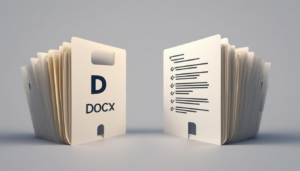
What a Proper Print Audit Can Reveal About Your Business (That You Probably Didn’t Know)
Here’s a fun question: when was the last time you looked at your business’s printing habits?
Not just a glance at the paper bills or the occasional grumble about the colour toner running out again. I mean a proper, detailed look at what’s actually being printed, by who, when, and why.
For most UK businesses, the answer is “never.” And that’s precisely why hidden inefficiencies often go unnoticed – quietly draining budget, time, and resources.
But the good news? A proper print audit can uncover all of this – and the results are usually more eye-opening than expected.
Why Bother with a Print Audit?
Let’s get straight to it: print audits save money.
We’re talking about potential overspending of up to 30% on print-related activities – and that’s not a made-up stat. It’s what many UK businesses discover once they finally put their printing under the microscope.
The point of a print audit isn’t to shame the marketing team for using too much colour ink. It’s to understand where the waste is happening, what’s outdated, and how your business can start printing smarter – or, in some cases, printing less.
What Exactly Does a Print Audit Look At?
A proper audit isn’t just counting paper or checking how old your printer is. It goes much deeper.
Here’s what gets analysed:
- Device numbers and usage – How many printers do you have? Are they all needed? Are some sitting idle while others are overused?
- Mono vs colour printing – Colour prints can be 5–10x more expensive than black and white. Most businesses don’t realise how much of it is completely unnecessary.
- Print volumes by user or department – Who’s printing the most? What are they printing? Is it business-critical or “just in case” copies?
- Paper, toner, and energy use – Every printed page costs something, and the real spend often includes hidden supply and power usage costs.
- Workflow bottlenecks – Are documents getting stuck in approval chains because they need to be printed, signed, scanned, and emailed back?
- Default settings – Still printing single-sided by default? Still allowing colour prints on every machine?
It’s a full 360° view of your print environment, with real numbers – not guesses.
Real-World Inefficiencies a Print Audit Can Expose
From our work with UK businesses (from high street retailers to mid-size law firms), here are some of the most common issues that crop up again and again:
- Redundant devices: Businesses often have way more printers than they need, especially after years of adding “just one more” for convenience. These sit idle, take up space, and suck up maintenance costs.
- Poor user behaviour: Think printing personal documents, single-sided printing of 50-page reports, or sending the same job to multiple devices when one’s busy.
- Unmonitored consumables: Toner gets reordered automatically, but no one’s checking if it’s actually needed. Paper usage isn’t tracked. And suddenly there’s a £500 stationery bill at the end of the month.
- Outdated workflows: Still printing out digital forms to sign them by hand? Still faxing things when a secure digital signature would do? These delays cost time and money.
- Expensive default settings: Colour as default, no user authentication, or allowing walk-up printing without tracking – these things might seem small, but the costs stack up fast.
One firm we worked with had five different printer models across seven departments – each requiring a different toner type. Madness. Once they standardised and consolidated, they cut costs by nearly 40%.
How the Audit Works – Step by Step
A good audit doesn’t disrupt your day-to-day. Here’s what typically happens:
- Baseline data is collected – Number of devices, monthly print volumes, cost of supplies, energy use, and user habits.
- Software and workflows are reviewed – How are documents being printed? How are they sent, stored, and tracked?
- Stakeholder interviews – Quick chats with team leads and office staff to understand what they actually need from print – and what’s just habit.
- Real-time usage monitoring – Tools are used to monitor print jobs across all devices over a short period, usually a week or two.
- Supplier contracts and pricing are analysed – Are you locked into overpriced agreements? Could you consolidate or renegotiate?
By the end of the process, you get a clear breakdown of what’s working, what’s not, and where the biggest savings are hiding.
The Results You Can Expect
Let’s be clear: a print audit doesn’t just hand you a list of problems. It gives you actionable fixes that actually make life easier.
These might include:
- Switching to double-sided printing by default (which alone can cut paper usage by up to 50%).
- Restricting colour printing to specific roles or projects.
- Consolidating devices so you’re not maintaining 10 different machines when 4 would do.
- Automating toner reordering only when needed, not on a timer.
- Replacing outdated machines with energy-efficient multifunction devices.
- Introducing secure print release so documents aren’t left abandoned on printers (a data security nightmare).
- Reducing the number of support tickets and calls to IT when devices are properly managed and monitored.
Oh, and not to be forgotten: your staff save time too. No more faffing about with jammed printers or waiting for that one reliable machine to become free.
Should You Get One?
If your business prints anything more than the occasional letter or invoice, the answer’s yes.
Even if you think your setup is “pretty efficient”, the data often tells a different story.
Most UK businesses only realise how much they’re spending on print after an audit – not before. And by then, those small inefficiencies have already added up to years of avoidable costs.
Final Thought
A print audit isn’t a flashy digital transformation project. It’s a simple, practical step that often delivers real savings fast.
The best part? Once it’s done, you’ve got a clear plan. No more guesswork. Just solid data showing you where your business is leaking money – and how to fix it.
And let’s be honest, who doesn’t want one less cost draining your budget every month?
Thinking of getting a print audit done? Make sure the provider actually looks at your business needs – not just device specs. Bonus points if they specialise in your sector, too.




